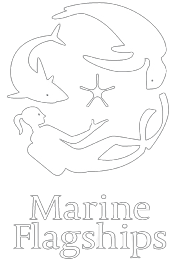| Ampullae of Lorenzini |
Subdermal groups of electroreceptive units that detect weak
electric stimuli.
|
| Avian prey |
Birds that serve as prey for larger predators.
|
| Benthic |
Relating to the bottom of a body of water.
|
| Epibenthic |
Organisms that live on or just above the seafloor.
|
| Heterocercal tail |
A tail with unequal upper and lower lobes.
|
| Hydraulic suction |
A method of drawing prey into the mouth through a drop in
pressure in the buccopharyngeal chamber.
|
| Hydrodynamic image |
A representation of an object based on the way water flows
around it.
|
| Inertial suction feeding |
A type of suction feeding involving a drop in the
buccopharyngeal chamber's pressure.
|
| Mechanosensory lateral line |
A sensory system that detects differences in water
movement to locate prey, predators, and mates.
|
| Orectolobiforms |
A group of sharks specialized in suction feeding, including nurse
sharks.
|
| Oviparity |
A reproductive strategy where eggs are laid externally.
|
| Ovoviviparity |
A reproductive strategy where fertilized eggs are retained within the
female's body.
|
| Pelagic |
Organisms living in the open sea, away from the coast.
|
| Placental viviparity |
A reproductive strategy where embryos develop inside the
mother's body and are nourished through a placental connection.
|
| Ram feeding |
A feeding strategy in which a shark swims over its prey to capture it.
|
| Rheotaxis |
The ability to orient in response to water currents.
|
| Suction feeding |
A method of prey capture that involves creating a pressure
difference to draw prey into the mouth.
|
| Trophic levels |
Positions within a food chain, indicating an organism's place as a
producer, herbivore, or carnivore.
|

